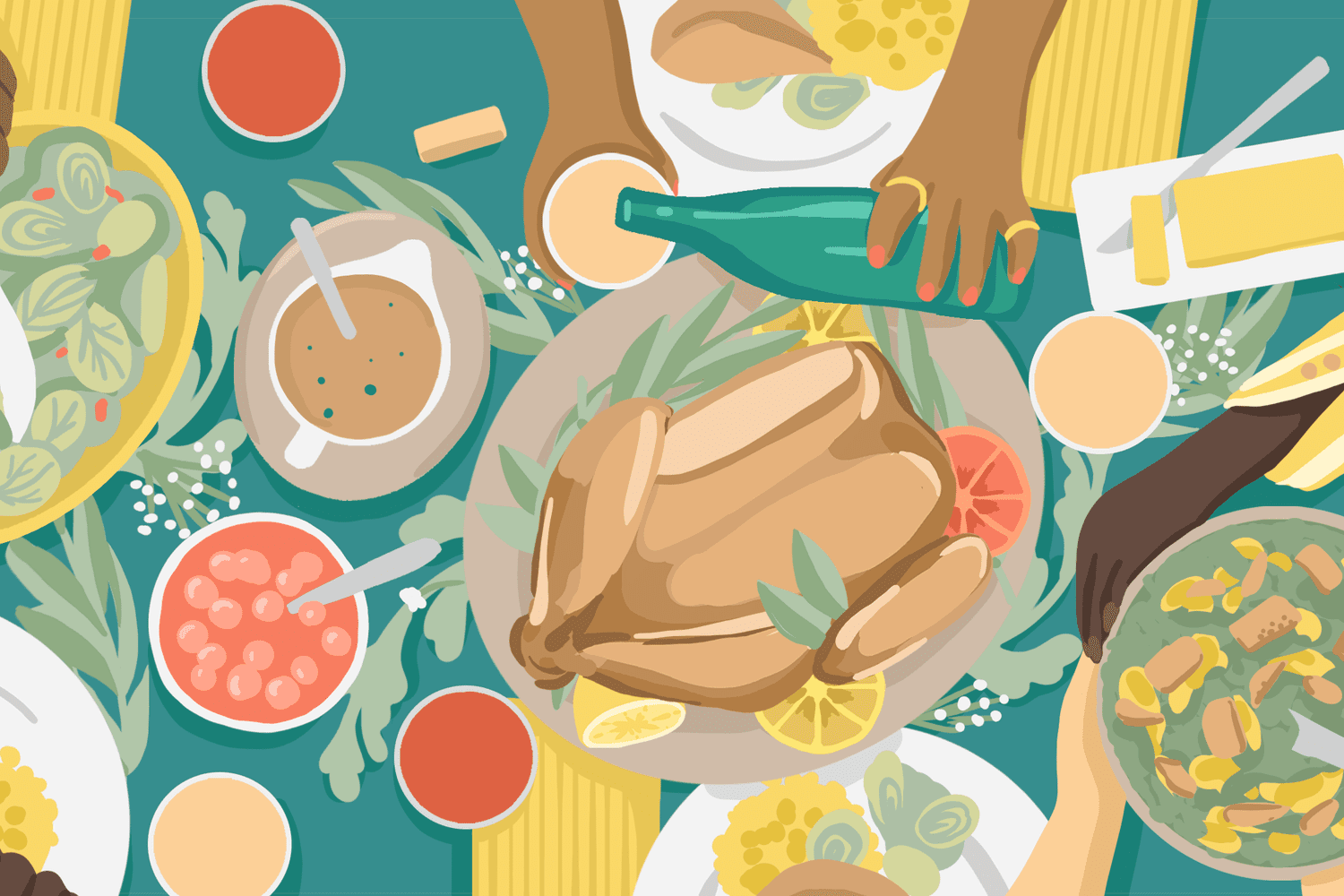
November has officially begun, which means it’s time to start preparing for your Thanksgiving feast. Since hosting a Thanksgiving dinner is almost always a daunting task that requires plenty of planning and preparation, we’re here to guide you through the process, so you can have a stress-free holiday that you might even enjoy. As you’ll see, a little extra effort before the fourth Thursday in November is the key to hosting a smooth, delightful Thanksgiving celebration that won’t break the bank.
In this handy holiday survival guide, you can find everything you’ll need to know about planning and serving an unforgettable (yet affordable) meal for your friends and loved ones. We’ve got it all covered—from when to buy your bird to what to do if your gravy is just a tad too salty—as well as every small-but-important detail in between. And the best part: our guidance and tips are designed so that you can rejoice in the holiday as well. Here’s what you need to know in order to survive (and thrive!) this Thanksgiving.
Turkey Talk
Grace Canaan
Like it or not, turkey is Thanksgiving’s undisputed star. Sure, it might not be everyone’s favorite item on the menu, but no Turkey Day spread is truly complete without, well, turkey. And while cooking a picture-perfect turkey certainly isn’t impossible, even a seasoned pro will tell you that it requires foresight and effort. For example, in order to figure out the best time to buy your turkey, you must first decide if you’re in the market for a fresh or frozen bird. If you’re going the frozen route (which is the more popular choice), you can purchase your turkey up to a year in advance and store it in your freezer. If fresh turkey is on the menu, plan to procure the main course a day or two before you intend to serve it.
Once you’ve bought your turkey, it’s all about properly thawing and cooking the bird so you actually have something juicy and delicious to eat on Thanksgiving Day. When deciding how long to cook your turkey, the most important factor to consider is the weight of your bird, along with whether it’s fully thawed or not. The temperature at which you cook your turkey, however, is more dependent on the cooking method you use. While 425 degrees Fahrenheit is the ideal starting temperature for an oven-roasted turkey, a smoked turkey should be cooked at a slightly lower temperature, between 325 and 350 degrees. And while there are countless turkey recipes to follow, we’re partial to this easy, classic Thanksgiving turkey recipe.
Prepare the Feast
Grace Canaan
While there’s no denying that the turkey is an integral part of the Thanksgiving meal, there are many other dishes that guests expect to see on the holiday table. This includes classics like cranberry sauce, stuffing, and green beans, as well as dozens of other festive side dishes that come together in less than an hour.
When planning your Turkey Day menu, we suggest first taking note of any dietary restrictions or preferences those at your holiday table may have. If you’re celebrating with vegetarians, for example, we recommend perusing this roundup of meat-free dishes so you can pick and choose what you’d like to serve. Then, it’s always prudent to start things off with a cocktail, especially on Thanksgiving. This way, your guests can chat and mingle while you put the final touches on the meal and tackle any last-minute emergencies. Last but certainly not least, you can’t forget about Thanksgiving dessert. We’ve got recipes for favorites like pumpkin pie and apple crisp, but we’ve also included recipes for less traditional treats like orange and clove Basque cheesecake and pumpkin pecan crisps.
Ready for Anything
Grace Canaan
No matter how much you plan for a flawless Thanksgiving feast, you’re bound to hit a snag or two. But don’t worry! We’ve got advice on how to tackle some common holiday mishaps, from the table to the kitchen. Speaking of your Thanksgiving table, now is the right time to decide what vibe you’re going for on the big day so you can ensure that each place setting is picture-perfect. A basic setting includes dining utensils, a napkin, dinner plate, and water glass, while a more formal setting calls for additions such as a bread plate, place card, and separate glasses for different types of wine. Once the table is set, make sure the chatter doesn’t lag with some help from this list of intriguing conversation starters.
In terms of the kitchen, two big (potential) problem areas are the turkey and the accompanying gravy. Your best bet is to avoid any turkey trouble by brushing up on these common turkey mistakes and how to fix them. It’s important to give your turkey ample time to defrost, and to only carve it once it has sufficiently rested. Not following either tip will result in a poorly cooked, dry bird. And if your gravy is too salty, no one is going to want to pour it over their plate. Luckily there are a few easy fixes for salty gravy that work almost instantly and use ingredients you likely already have at home. For example, you can try adding plain yogurt or sour cream to the gravy to mask the salt, or you can add a spoonful of sugar or honey to balance out those salty notes.
Now that you’ve been reacquainted with the turkey basics, gotten some Thanksgiving menu inspiration, and know the common holiday pitfalls to avoid, it’s finally time to start cooking!
